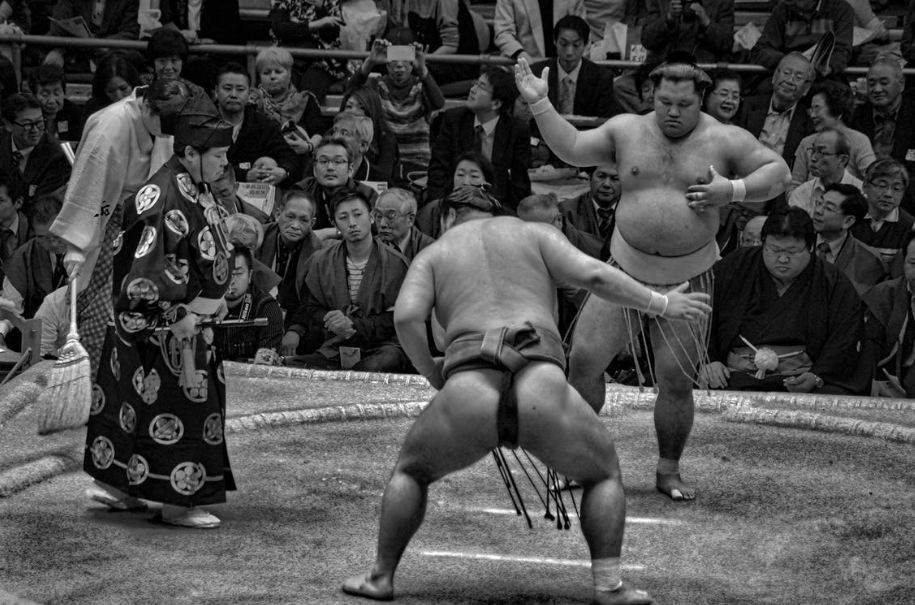What Do Dragons Represent in Japanese Culture?

In Japanese culture, dragons represent a deep connection between nature and spirituality, symbolizing power, wisdom, and protection. They're often depicted as water deities, influencing rain and sea, reflecting the life-giving and purifying aspects of water. Unlike their Western counterparts, Japanese dragons are revered as guardians and wise mentors in myths and temple decorations. They embody harmony, balance, and the forces of nature, linking humans to the divine. Their presence can be seen in festivals, art, and literature, continuously inspiring and teaching the values of strength and resilience. Uncover how these majestic creatures impact diverse cultural facets.
Origins of Japanese Dragons
Although dragons are often associated with Chinese culture, Japanese dragons have their own distinct origins and significance. When you investigate the dragon origins in Japan, you'll find a rich tapestry woven from diverse ancient influences. Unlike their Chinese counterparts, Japanese dragons are often depicted as water deities, highlighting their connection to the sea and rain, which is essential for rice cultivation. This connection to water echoes with Shinto beliefs where kami are integral to nature, emphasizing the importance of natural elements in spiritual life.
The origins of Japanese dragons can be traced back to the indigenous myths and stories of Japan, which were later shaped by influences from neighboring cultures. As you probe deeper, you'll notice the ancient influences from India and China, which played a significant role in shaping the Japanese perception of dragons. Buddhism's introduction to Japan brought along Indian serpent deities, known as nâgas, which merged with local beliefs and contributed to the dragon's symbolism in Japan.
Moreover, Shintoism, Japan's native religion, also impacted the dragon's significance. You can see how these ancient influences combined to create a unique image of dragons in Japan, one that emphasizes harmony with nature and the elements. Understanding these origins provides insight into the cultural and spiritual dimensions that dragons embody in Japanese society.
Dragons in Japanese Mythology
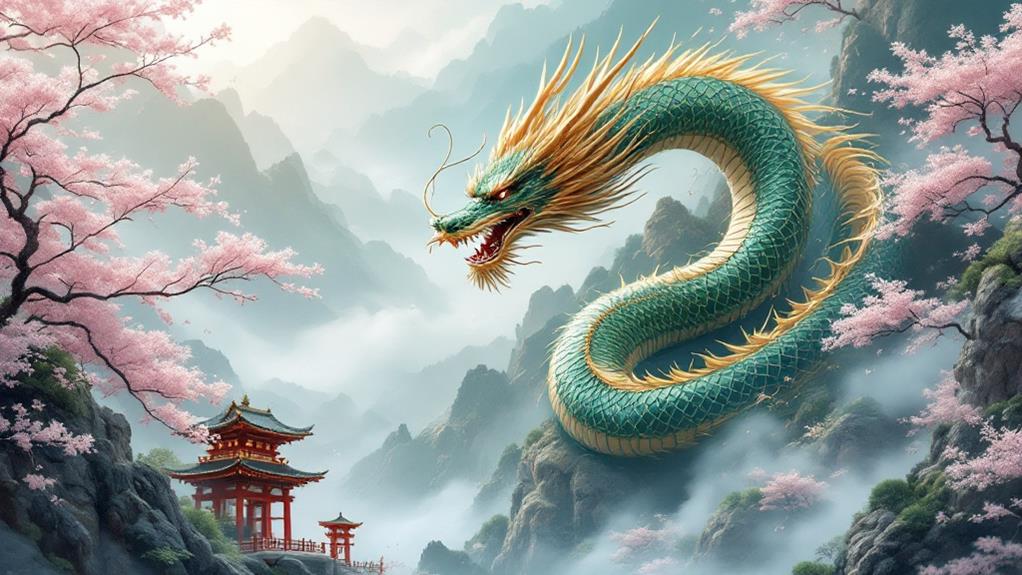
Dragons play a crucial role in Japanese mythology, symbolizing power, wisdom, and protection. They're not just fearsome creatures; they're also revered as benevolent beings guiding humanity. In Japanese mythology, you'll encounter different dragon types, each with unique dragon traits. Understanding these can offer insight into their roles and significance. Just as the traditional family structures in Japan have evolved over time, so too have the interpretations of dragons, reflecting shifts in cultural values and societal norms.
- Ryujin: A sea dragon god, Ryujin controls the tides and represents the power of the ocean. His traits include immense strength and the ability to transform into a human. Ryujin often appears in stories as a wise ruler of the underwater domain.
- Yamata no Orochi: Known for its eight heads and immense size, Yamata no Orochi is a legendary serpent-like dragon. This fearsome creature embodies chaos and destruction and is often depicted in tales as an adversary needing to be overcome by heroism.
- Kiyohime: A more personal and tragic figure, Kiyohime transforms into a dragon out of unrequited love and jealousy. Her story reflects the human emotions of desire and transformation into something feared.
Each dragon type, from the mighty Ryujin to the tragic Kiyohime, adds depth to Japanese mythology, showcasing the varied dragon traits that embody both awe and caution.
Symbolism of Water and Rain
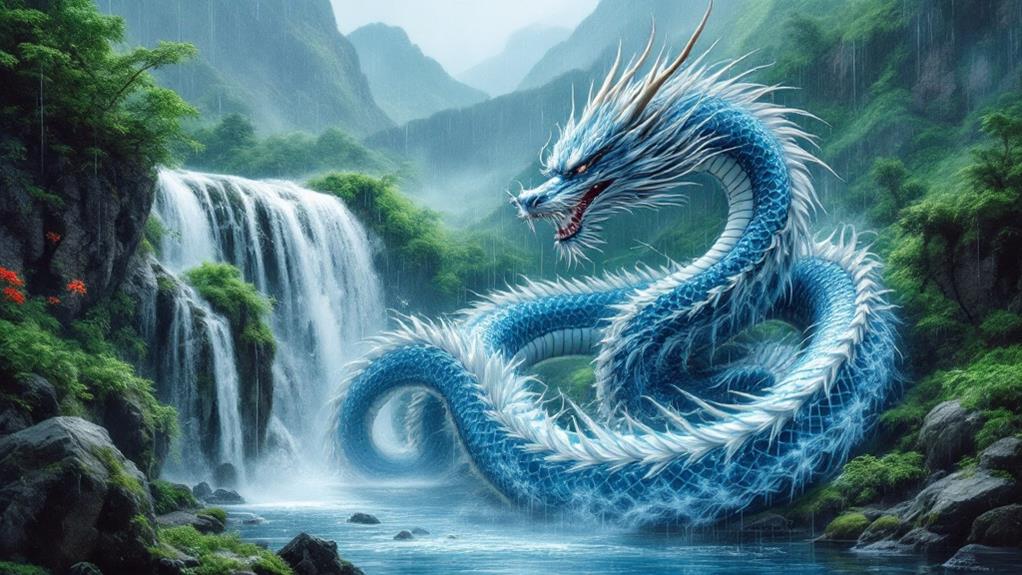
In Japanese culture, water and rain hold profound symbolism, mirroring the themes found in dragon mythology. You'll find that dragons are often seen as water deities, embodying the power and mystery of water itself. Rain symbolizes life-giving forces, closely linked to fertility associations and agricultural significance. Without rain, crops can't grow, and life struggles to sustain itself. Consequently, dragons, as storm bringers, are revered for their ability to maintain natural balance and support the life cycles of the earth.
Understanding the importance of water and rain requires appreciating their role in seasonal changes. Each season brings a different set of cultural rituals, often tied to the rhythms of rain and water. You'll notice how these rituals reflect an intimate connection to the land and its needs. Rain is also believed to possess healing properties, cleansing and rejuvenating the earth, much like the mythical dragons that govern its flow.
The symbolism extends beyond mere weather patterns; it probes into the essence of life and the universe. By recognizing the dragon's influence over water, you're tapping into a deeper appreciation of nature's cycles and humanity's reliance on these elemental forces.
Dragons as Protectors

As you investigate Japanese culture, you'll uncover that dragons are celebrated as powerful protectors. These mystical creatures are revered not just as mythical beings but also as symbols of dragon guardianship. In numerous legends and folklore, they act as spiritual protectors, guaranteeing the safety and well-being of individuals and communities. Unlike their Western counterparts often associated with destruction, Japanese dragons embody a benevolent force.
You might wonder how dragons play the role of protectors in Japanese culture. Here are three ways:
- Temple Guardians: Many temples in Japan feature carvings and statues of dragons, symbolizing their role as divine protectors against evil spirits and misfortune. These dragons are believed to safeguard sacred spaces, guaranteeing spiritual harmony.
- Nature's Custodians: Dragons are often associated with natural elements like water, which they are believed to control. By maintaining balance and harmony in nature, they protect crops and guarantee prosperity for the community.
- Cultural Narratives: In traditional stories, dragons frequently appear as wise creatures offering guidance and protection. They serve as mentors, imparting wisdom and strength to those who seek their help.
Cultural Depictions in Art

While exploring how dragons serve as protectors in Japanese culture, you'll also notice their prominent presence in art. These mythical creatures have inspired countless artworks, demonstrating the deep connection between dragons and Japanese artistic expression. When you observe traditional Japanese art, you'll find dragon motifs skillfully woven into numerous artistic styles, ranging from ancient paintings to modern interpretations.
In Japanese scroll paintings, dragons often appear as powerful, swirling figures, their forms seamlessly integrated into the natural landscape. Artists capture the essence of these creatures by using fluid lines and dynamic compositions, which convey their mystical energy. You'll see dragons painted on folding screens and sliding doors, serving both decorative and symbolic purposes in homes and temples.
Ceramics and textiles also showcase dragon motifs, highlighting their adaptability across different mediums. Potters and weavers incorporate intricate dragon designs into their creations, blending traditional techniques with contemporary flair. In tattoos, dragons are a popular choice, symbolizing strength and protection. Artists apply vivid colors and detailed patterns to bring these mythical beings to life on skin. Through these varied artistic styles, dragons continue to captivate and inspire, reflecting their enduring significance in Japanese culture.
Religious Significance of Dragons

Dragons hold a profound place in Japanese religious beliefs, intertwining with spiritual practices and mythology. In Japan, dragons aren't just mythical creatures; they're revered as dragon deities, embodying the forces of nature and the divine. You'll often find these majestic beings depicted as protectors, symbolizing strength and wisdom.
In religious contexts, dragons assume the role of spiritual guardians, safeguarding sacred spaces and guiding believers. Their presence in temples and shrines signifies protection and prosperity, connecting the earthly domain with the divine. By understanding their religious significance, you can appreciate how they influence multiple aspects of Japanese spirituality.
Consider the following ways dragons manifest in religious practices:
- Dragon Kings: These are powerful dragon deities believed to control rainfall and water bodies. They're often invoked in prayers for a bountiful harvest.
- Shrine Guardians: Dragons serve as guardians at temple gates, warding off evil spirits and ensuring the safety of the sacred grounds.
- Spiritual Symbols: As embodiments of balance and harmony, dragons remind followers to seek inner peace and spiritual enlightenment.
Dragons in Japanese Folklore

How do dragons captivate the imagination in Japanese folklore? These mythical creatures, known for their majestic presence and powerful aura, often embody both benevolent and malevolent forces. In Japanese tales, dragon characteristics such as wisdom, strength, and control over water resonate deeply with the natural elements and human emotions. Unlike their Western counterparts, Japanese dragons are typically depicted as serpentine beings without wings, often with a mystical connection to rivers, seas, and rain. This connection underscores their revered status, symbolizing prosperity and protection.
Legendary encounters with dragons frequently appear in folklore, offering fascinating stories that reflect cultural values. For instance, the tale of Ryujin, the dragon god of the sea, illustrates the dragon's dual nature. Ryujin is both a fearsome protector of the ocean and a generous deity providing blessings from the sea. In another story, the hero Yamato Takeru faces a malevolent eight-headed dragon, Yamata no Orochi, showcasing courage and ingenuity in overcoming threats. These narratives highlight how dragons in Japanese folklore serve as metaphors for challenges and virtues, influencing the actions and beliefs of those who encounter them. Through these stories, dragons continue to inspire and captivate.
Festival Celebrations Involving Dragons
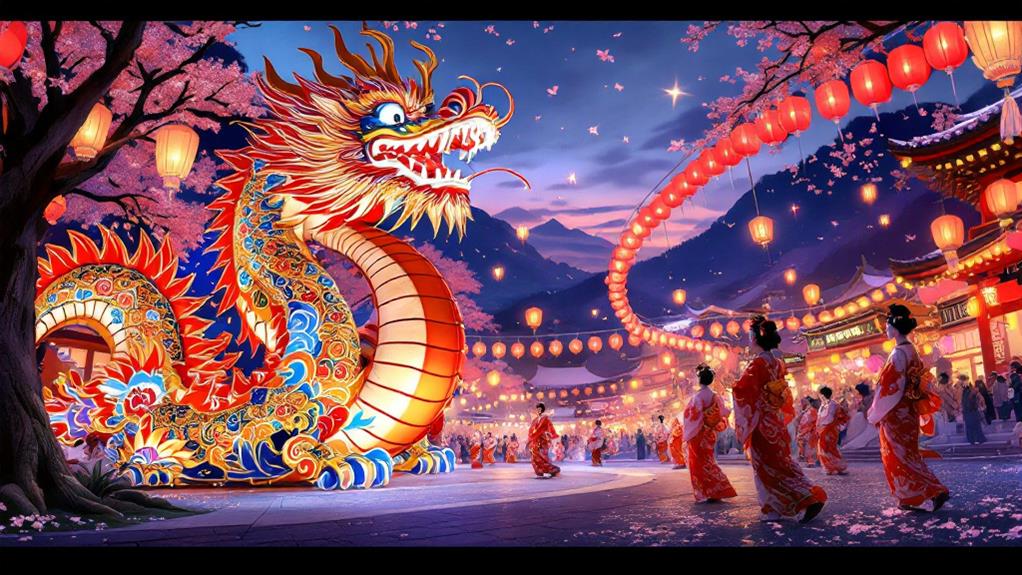
In Japanese culture, the colorful presence of dragons extends beyond folklore into lively festival celebrations. You'll find that these mythical creatures are central to diverse community events, where they're celebrated through extravagant displays and traditional practices. Dragon dances and festival rituals are integral parts of these events, creating a lively and dynamic atmosphere that captivates audiences.
When you attend a Japanese festival featuring dragons, expect to see:
- Dragon Dance: Skilled performers maneuver elaborate dragon costumes, often several meters long, to mimic the dragon's majestic movements. The dance symbolizes power, strength, and good fortune, drawing large crowds enthusiastic to witness the spectacle.
- Festival Rituals: Many festivals incorporate rituals that honor dragons, believed to be harbingers of rain and prosperity. These rituals often involve offerings and prayers, reflecting the deep respect and reverence for these mythical creatures.
- Cultural Displays: Besides the dance and rituals, you'll encounter diverse cultural elements, such as traditional music and crafts, enhancing the festive spirit and showcasing Japan's rich cultural heritage.
Dragons in Japanese Literature
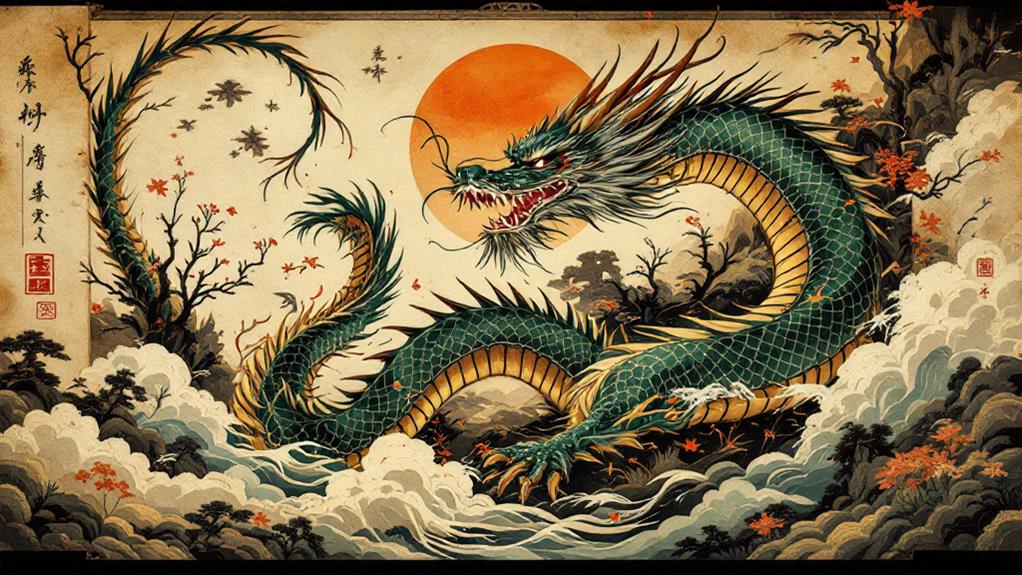
Have you ever wondered how dragons have shaped the rich tapestry of Japanese literature? These mythical creatures are woven deeply into the narratives, often serving as powerful symbols and crucial characters. Dragon characters in Japanese literature aren't just about fire and fury; they embody a range of traits and themes that resonate through the stories they inhabit. Dragons often symbolize wisdom, strength, and protection, reflecting the cultural reverence for these enigmatic beings.
Japanese literature uses dragon characters to examine complex human emotions and societal values. In classic tales like "The Tale of the Heike," dragons represent transformation and the impermanence of life. These stories use dragons to illustrate the rise and fall of fortunes, mirroring the ebb and flow of human existence.
Moreover, dragons in Japanese literature frequently serve as guardians or adversaries, challenging protagonists and pushing them toward growth. They can also symbolize natural forces and the deep connection between humans and the environment. As you engage with these literary works, you'll find dragons breathing life into the narrative, serving as powerful symbols that enrich the storyline and offer profound insights into human nature and cultural ideals.
Modern Interpretations and Legacy
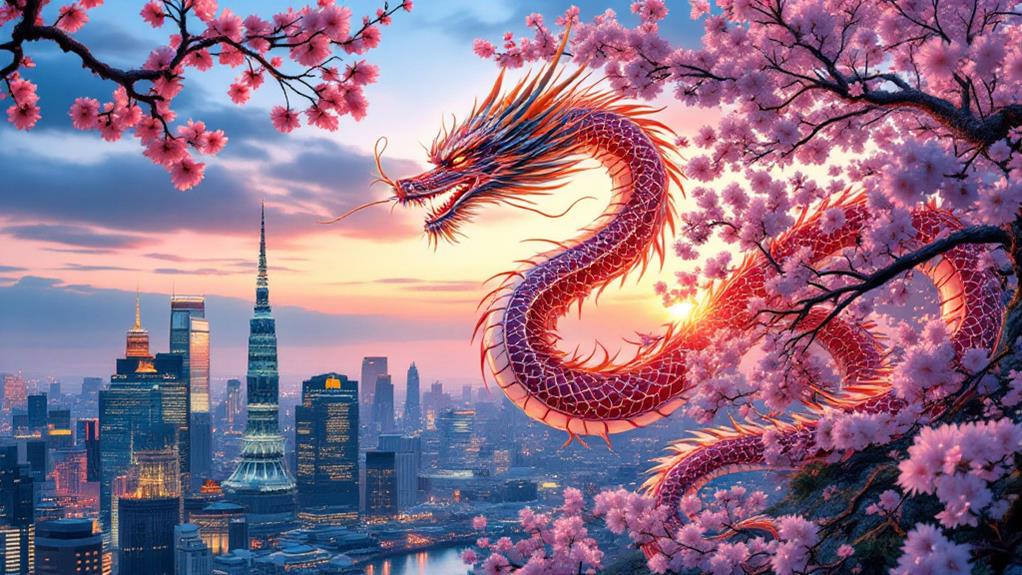
Exploring the colorful world of dragons in Japanese literature, you uncover their profound impact on modern interpretations and legacy. Dragon symbolism, deeply rooted in tradition, continues to influence contemporary culture in diverse ways. In tattoo artistry, dragon tattoos are celebrated for their intricate designs and powerful meanings, symbolizing strength, wisdom, and protection. Dragon motifs appear in fashion and art, reflecting a blend of ancient reverence and modern creativity.
Modern adaptations of dragon narratives breathe life into these mythical creatures, showcasing them as complex dragon characters in films, anime, and video games. These adaptations keep the essence of dragon representations alive, engaging new audiences with their timeless allure. Meanwhile, dragon festivals across Japan honor these legendary beings, blending cultural heritage with community spirit, and ensuring that dragon symbolism remains lively and relevant.
Consider these modern interpretations:
- Dragon Tattoos: Express personal strength and individuality through intricate designs.
- Dragon Festivals: Celebrate cultural heritage and community spirit.
- Dragon Characters in Media: Introduce complex narratives, blending tradition with innovation.

